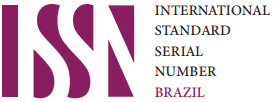Tratamento do transtorno bipolar no idoso: uma revisão da literatura
DOI:
https://doi.org/10.25118/2236-918X-7-6-3Palavras-chave:
Bipolar, idoso, tratamento, mania, depressão, envelhecimentoResumo
O transtorno afetivo bipolar (TAB) é uma condição potencialmente grave, caracterizada por mudanças de humor e disfunção cognitiva e funcional. O presente artigo revisa as evidências atualizadas das intervenções farmacológicas e não medicamentosas direcionadas ao TAB em idosos. Diretrizes baseadas em evidências, embora sejam úteis na promoção de uma terapia racional e eficaz, ainda são relativamente reduzidas no TAB em idosos. As recomendações atuais para mania aguda incluem o uso de antipsicóticos atípicos (por exemplo, risperidona, quetiapina, olanzapina), lítio (de maneira criteriosa) e a eleição de valproato como terapia padrão ouro. Na depressão aguda do TAB, os agentes de primeira linha em monoterapia podem incluir lítio, lamotrigina, quetiapina e quetiapina de liberação prolongada. No que se refere à escolha do estabilizador de humor ideal, o maior potencial de efeitos colaterais relacionados ao lítio vem desestimulando sua prescrição em indivíduos idosos. A eletroconvulsoterapia, embora limitada pela evidência, pode ser uma opção para casos graves/refratários.
Downloads
Métricas
Referências
Bauer M, Pfennig A. Epidemiology of bipolar disorders. Epilepsia. 2005;46:8-13.
Regier DA, Boyd JH, Burke JD Jr, Rae DS, Myers JK, Kramer M, et al. One-month prevalence of mental disorders in the United States. Based on five epidemiologic catchment area sites. Arch Gen Psychiatry. 1988;45:977-86.
Préville M, Boyer R, Grenier S, Dubé M, Voyer P, Punti R, et al. The epidemiology of psychiatric disorders in Quebec’s older adult population. Can J Psychiatry. 2008;53:822-32.
Oertel-Knöchel V, Reuter J, Reinke B, Marbach K, Feddern R, Alves G, et al. Association between age of disease-onset, cognitive performance and cortical thickness in bipolar disorders. J Affect Disord. 2015;174:627-35.
American Psychiatric Association. Diagnostic and Statistical Manual of Mental Disorders, Fifth Edition (DSM-5). Arlington: American Psychiatric Publishing; 2013.
World Health Organization. The ICD-10 Classification of Mental and Behavioural Disorders: clinical descriptions and diagnostic guidelines [Internet]. 1992 [cited 2018 Jan 16]. http://www.who.int/classifications/icd/en/bluebook.pdf
Gunning-Dixon FM, Murphy CF, Alexopoulos GS, Majcher-Tascio M, Young RC. Executive dysfunction in elderly bipolar manic patients. Am J Geriatr Psychiatry. 2008;16:506-12.8. Dhingra U, Rabins PV. Mania in the elderly: a 5-7 year follow-up. J Am Geriatr Soc. 1991;39:581-3.
Bartels SJ, Forester B, Miles KM, Joyce T. Mental health service use by elderly patients with bipolar disorder and unipolar major depression. Am J Geriatr Psychiatry. 2000;8:160-6.
Bowden CL. Pharmacological treatments for bipolar disorder: present recommendations and future prospects. Curr Top Behav Neurosci. 2011;5:263-83.
Nivoli AM, Murru A, Pacchiarotti I, Valenti M, Rosa AR, Hidalgo D, et al. Bipolar disorder in the elderly: a cohort study comparing older and younger patients. Acta Psychiatr Scand. 2014;130:364-73.
Goodwin GM, Consensus Group of the British Association for Psychopharmacology. Evidencebased guidelines for treating bipolar disorder: revised second edition--recommendations from the British Association for Psychopharmacology. J Psychopharmacol. 2009;23:346-88.
Goldberg JF, Perlis RH, Bowden CL, Thase ME, Miklowitz DJ, Marangell LB, et al. Manic symptoms during depressive episodes in 1,380 patients with bipolar disorder: findings from the STEP-BD. Am J Psychiatry. 2009;166:173-81.
Sherrod T, Quinlan-Colwell A, Lattimore TB, Shattell MM, Kennedy-Malone L. Older adults with bipolar disorder: guidelines for primary care providers. J Gerontol Nurs. 2010;36:20-7; quiz 28-9.
Sajatovic M, Strejilevich SA, Gildengers AG, Dols A, Al Jurdi RK, Forester BP, et al. A report on older-age bipolar disorder from the International Society for Bipolar Disorders Task Force. Bipolar Disord. 2015;17:689-704.
McIntyre RS, Danilewitz M, Liauw SS, Kemp DE, Nguyen HTT, Kahn LS, et al. Bipolar disorder and metabolic syndrome: an international perspective. J Affect Disord. 2010;126:366-87.
Diniz BS, Nunes PV, Machado-Vieira R, Forlenza OV. Current pharmacological approaches and perspectives in the treatment of geriatric mood disorders. Curr Opin Psychiatry. 2011;24:473-7.18. Kessing LV, Forman JL, Andersen PK. Does lithium protect against dementia? Bipolar Disord. 2010;12:87-94.
Lavsa SM, Fabian TJ, Saul MI, Corman SL, Coley KC. Influence of medications and diagnoses on fall risk in psychiatric inpatients. Am J Health-Syst Pharm. 2010;67:1274-80.
Mezuk B, Morden NE, Ganoczy D, Post EP, Kilbourne AM. Anticonvulsant use, bipolar disorder, and risk of fracture among older adults in the Veterans Health Administration. Am J Geriatr Psychiatry. 2010;18:245-55.
Yatham LN, Kennedy SH, Parikh SV, Schaffer A, Beaulieu S, Alda M, et al. Canadian Network for Mood and Anxiety Treatments (CANMAT) and International Society for Bipolar Disorders (ISBD) collaborative update of CANMAT guidelines for the management of patients with bipolar disorder: update 2013. Bipolar Disord. 2013;15:1-44.
Bai YM, Chang CJ, Tsai SY, Chen YC, Hsiao MC, Li CT, et al. Taiwan consensus of pharmacological treatment for bipolar disorder. J Chin Med Assoc. 2013;76:547-56.
Grunze H, Vieta E, Goodwin GM, Bowden C, Licht RW, Möller HJ, et al. The World Federation of Societies of Biological Psychiatry (WFSBP) guidelines for the biological treatment of bipolar disorders: update 2012 on the longterm
treatment of bipolar disorder. World J Biol Psychiatry. 2013;14:154-219.
Shulman KI. Lithium for older adults with bipolar disorder: should it still be considered a first-line agent? Drugs Aging. 2010;27:607-15.
Health US National Institutes of Clinical Trials on Geriatric Bipolar Disorder [Internet]. [cited 2018 Jan 16]. https://clinicaltrials.gov/ct2/results?term=Geriatric+Bipolar+Disorder+AND+treatment&Search=Search
Shulman KI, Herrmann N. The nature and management of mania in old age. Psychiatr Clin North Am. 1999;22:649-65, ix.
Young RC, Gyulai L, Mulsant BH, Flint A, Beyer JL, Shulman KI, et al. Pharmacotherapy of bipolar disorder in old age: review and recommendations. Am J Geriatr Psychiatry. 2004;12:342-57.
Sajatovic M, Madhusoodanan S, Coconcea N. Managing bipolar disorder in the elderly: defining the role of the newer agents. Drugs Aging. 2005;22:39-54.
Aziz R, Lorberg B, Tampi RR. Treatments for latelife bipolar disorder. Am J Geriatr Pharmacother. 2006;4:347-64.
Smith LA, Cornelius V, Warnock A, Tacchi MJ, Taylor D. Acute bipolar mania: a systematic review and meta-analysis of co-therapy vs. monotherapy. Acta Psychiatr Scand. 2007;115:12-20.
Ceron-Litvoc D, Soares BG, Geddes J, Litvoc J, de Lima MS. Comparison of carbamazepine and lithium in treatment of bipolar disorder: a systematic review of randomized controlled trials. Hum Psychopharmacol. 2009;24:19-28.
Grunze H, Vieta E, Goodwin GM, Bowden C, Licht RW, Moller HJ, et al. The World Federation of Societies of Biological Psychiatry (WFSBP) guidelines for the biological treatment of bipolar disorders: update 2009 on the treatment of acute mania. World J Biol Psychiatry. 2009;10:85-116.
López-Álvarez J, Agüera-Ortiz LF, Marín-Mayor M. Abordaje terapéutico del trastorno bipolar en ancianos: tratamientos específicos y características especiales. Psicogeriatria. 2009;1:115-25.
Sproule BA, Hardy BG, Shulman KI. Differential pharmacokinetics of lithium in elderly patients. Drugs Aging. 2000;16:165-77.
Grunze H, Vieta E, Goodwin GM, Bowden C, Licht RW, Möller HJ, et al. The World Federation of Societies of Biological Psychiatry (WFSBP) guidelines for the biological treatment of bipolar disorders: update 2010 on the treatment of acute bipolar depression. World J Biol Psychiatry. 2010;11:81-109.
Al Jurdi RK, Marangell LB, Petersen NJ, Martinez M, Gyulai L, Sajatovic M. Prescription patterns of psychotropic medications in elderly compared with younger participants who achieved a “recovered” status in the systematic treatment enhancement program for bipolar disorder. Am J Geriatr Psychiatry. 2008;16:922-33.
Selle V, Schalkwijk S, Vázquez GH, Baldessarini RJ. Treatments for acute bipolar depression: metaanalyses of placebo-controlled, monotherapy trials of anticonvulsants, lithium and antipsychotics. Pharmacopsychiatry. 2014;47:43-52.
Sajatovic M, Gildengers A, Al Jurdi RK, Gyulai L, Cassidy KA, Greenberg RL, et al. Multisite, openlabel, prospective trial of lamotrigine for geriatric bipolar depression: a preliminary report. Bipolar Disord. 2011;13:294-302.
McElroy SL, Weisler RH, Chang W, Olausson B, Paulsson B, Brecher M, et al. A double-blind, placebo-controlled study of quetiapine and paroxetine as monotherapy in adults with bipolar depression (EMBOLDEN II). J Clin Psychiatry. 2010;71:163-74.
Pacchiarotti I, Bond DJ, Baldessarini RJ, Nolen WA, Grunze H, Licht RW, et al. The International Society for Bipolar Disorders (ISBD) task force report on antidepressant use in bipolar disorders. Am J Psychiatry. 2013;170:1249-62.
Zhang Y, Yang H, Yang S, Liang W, Dai P, Wang C, et al. Antidepressants for bipolar disorder: a metaanalysis of randomized, double-blind, controlled trials. Neural Regen Res. 2013;8:2962-74.
Arvilommi P, Suominen K, Mantere O, Leppämäki S, Valtonen HM, Isometsä E. Maintenance treatment received by patients with bipolar I and II disorders--a naturalistic prospective study. J Affect Disord. 2010;121:116-26.
Juurlink DN, Mamdani MM, Kopp A, Rochon PA, Shulman KI, Redelmeier DA. Drug-induced lithium toxicity in the elderly: a population-based study. J Am Geriatr Soc. 2004;52:794-8.
Kupka RW, Nolen WA, Post RM, McElroy SL, Altshuler LL, Denicoff KD, et al. High rate of autoimmune thyroiditis in bipolar disorder: lack of association with lithium exposure. Biol Psychiatry. 2002;51:305-11.
Kelly KG, Zisselman M. Update on electroconvulsive therapy (ECT) in older adult. J Am Geriatr Soc. 2000;48:560-6.
Shelef A, Mazeh D, Berger U, Baruch Y, Barak Y. Acute electroconvulsive therapy followed by maintenance electroconvulsive therapy decreases hospital re-admission rates of older patients with severe mental illness. J ECT. 2015;31:125-8.
Lisanby SH. Electroconvulsive therapy for depression. N Engl J Med. 2007;357:1939-45.
Frank E, Swartz HA, Kupfer DJ. Interpersonal and social rhythm therapy: managing the chaos of bipolar disorder. Biol Psychiatry. 2000;48:593-604.
Lam DH, Watkins ER, Hayward P, Bright J, Wright K, Kerr N, et al. A randomized controlled study of cognitive therapy for relapse prevention for bipolar affective disorder: outcome of the first year. Arch Gen Psychiatry. 2003;60:145-52.
Downloads
Publicado
Como Citar
Edição
Seção
Licença

Este trabalho está licenciado sob uma licença Creative Commons Attribution-NonCommercial 4.0 International License.
Debates em Psiquiatria permite que o (s) autor (es) mantenha(m) seus direitos autorais sem restrições. Atribuição-NãoComercial 4.0 Internacional (CC BY-NC 4.0) - Debates em Psiquiatria é regida pela licença CC-BY-NC

































